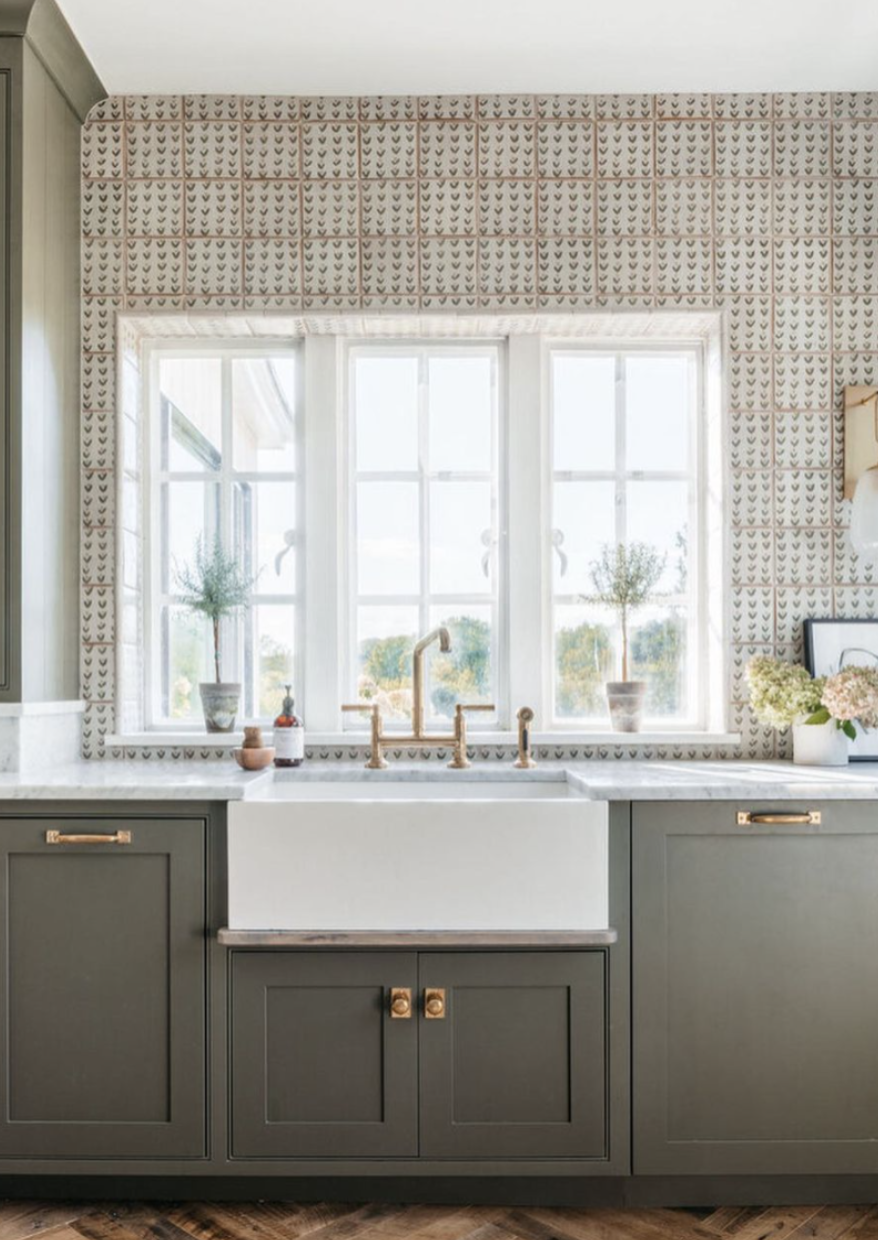Everything You Need to Know About Farmhouse Sinks
The farmhouse sink – also known as an apron sink – is recognized for its wide and deep basin and has gone through a revival over the last several years. As kitchens continue to become large, open gathering spaces for families, the farmhouse sink adds a touch of classic charm while also serving as the perfect hiding spot for dirty dishes.
Because there are so many different varieties, materials, price points and installation requirements for farmhouse sinks, it’s very important to work with an experienced team who can guide you through the entire process.
A Brief History of the Farmhouse Sink
Farmhouse sinks date all the way back to the 1600s before homes had running water. The original use of the farmhouse sink was more for the holding of water. People would fill up the deep basin with water for bathing, cleaning, washing dishes and cleaning clothes. Farmhouse sinks became a staple throughout European homes in the 17th and 18th century. The original designs surfaced in Britain and Ireland and they were known as the London and the Belfast (Native Trails).
The main difference between the two was an overflow feature that farmhouse sinks in Ireland had as opposed to the ones in Britain, mainly because water was easier to procure in Ireland at the time. Farmhouse sinks in Britain traditionally had a shallower basin with no overflow so that water could be conserved.
Modernized styles are made with a variety of materials, making these sinks practical, durable and an attractive fixture for every kitchen.In addition, they come in many different styles including classic and contemporary, and can also come as workstations with several features built in.
Single Basin or Double Basin Sinks
Deciding on whether to go with single basin or double basin sinks, also known as single bowl or double bowl sinks, is an important decision. The trend over the last several years has been to move away from double basin sinks. Double basin sinks were very popular before dishwashing machines became more common in households. Having two basins allowed people to keep dirty dishes in one basin, while the other basin was used to rinse the clean dishes.
Pros of a single basin farmhouse sink
It provides more space for washing bigger kitchen items like pots and pans
It’s ideal and more aesthetically pleasing for smaller kitchens
Native Trails / Source: Instagram
Pros of a double basin farmhouse sink
Ideal for those who don’t have access to a dishwasher and need to separate clean from dirty dishes
Ideal for those who prefer to wash dishes by hand
It makes garbage disposal easier as you can use the disposal on one side of the basin
Farmhouse Sink Materials
Knowing what sink material works best for your kitchen and overall aesthetic can be a daunting task. Our in-house team of consultants expertly curate our entire selection to ensure you’re getting only the highest quality from leading brands. Read on as we go over the pros and cons of some of the most sought-after farmhouse kitchen sink materials.
Fireclay Sinks
Extremely popular, timeless, elegant and charming. Fireclay sinks are made from clay and glaze being fused together at high temperatures.
Pros:
Highly durable and resistant to chips and cracks with proper care
Resistant to acids and scratches
Timeless, classic and elegant
Cons:
Very heavy so proper installation is required with extra support
Stainless Steel Sinks
Stainless steel sinks are classic, and a good quality stainless steel sink is long lasting and looks beautiful.
Pros:
Durable
More lightweight than other sink materials
Coordinate easily with other finishes
Cons:
Can scratch or dent
Water marks are more visible
Natural Stone Sinks
Natural stone sinks are beautiful and are cut from a single boulder adding a touch of exclusivity. There are many different stone sink options such as granite, marble, limestone, concrete and more.
Pros:
Highly durable and heat resistant
Exclusivity as no two sinks are alike and cut from a single block of stone
Timeless, classic and elegant
Cons:
Easily stains and requires higher maintenance
Requires resealing every few years to prevent stains
Heavier in weight and requires extra support for installation
Copper sinks
Copper sinks are an excellent choice for your kitchen or bathroom due to its natural antibacterial property. Copper sinks have a beautiful, timeless look.
Pros:
Copper is a living metal which will naturally patina
Unique and durable
Will not rust
Easy to clean
Naturally kills harmful bacteria
Cons:
Needs to be polished to maintain the original finish
NativeStone sinks
NativeStone sinks have a similar look to traditional concrete sinks but are more lightweight. They are handmade using natural and sustainable materials and are sealed with NativeStone Shield for the ultimate protection.
Pros:
About 40% more lightweight than standard concrete
Crack and stain resistant
Low maintenance
Cons:
Sealer needs to be refreshed every 3 to 5 years
Let our expert team walk you through all of the important details to make the vision of your ideal kitchen a reality. Request an appointment and let us inspire you today.










